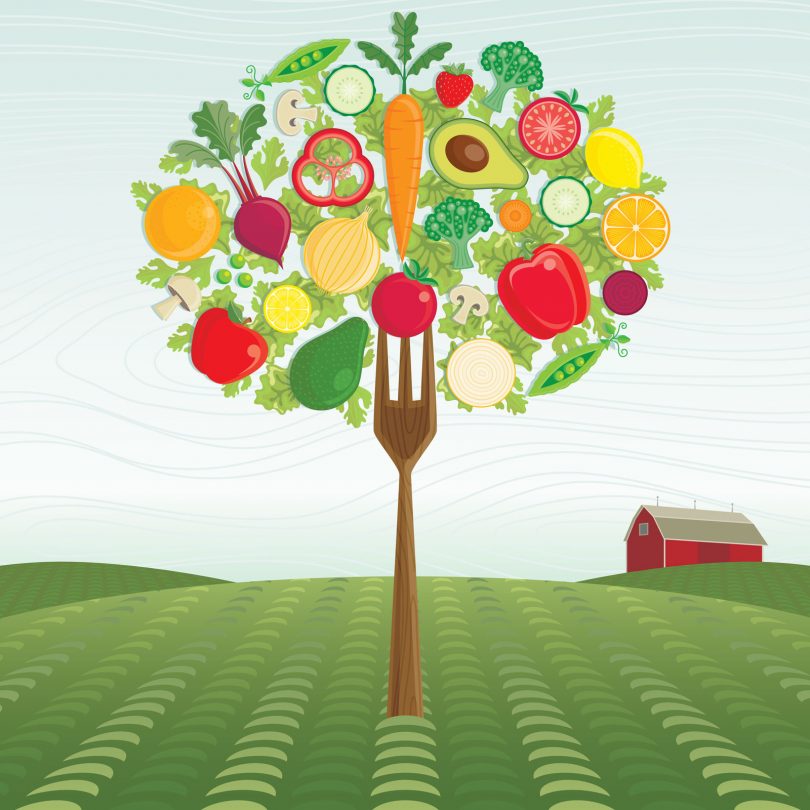(And why you shouldn’t worry if they’re not)
Many parents spend a lot of time trying to get their kids to eat vegetables, often resulting in contentious family dinners that end in tears — and not always from the kids.
Rather than just trying another sneaky tactic, it would do parents good to first change their philosophy and approach, says Carolyn Kusenda, the assistant director of Clinical Nutrition and Patient Services at Children’s Hospital of the King’s Daughters (CHKD) in Norfolk, Va.
“I don’t think people think about it developmentally like they think about other developmental milestones like talking and walking,” Kusenda says. “Introducing foods into the diet is part of a developmental process that occurs the minute you start eating solid foods.”
Think of introducing foods like children learning to walk. It’s part of their development.
“It’s not like at the age of six months we try to stand our baby up on their legs and say ‘walk,’ ” she says. “As a society, we really need to start introducing vegetables into the eating patterns of infants as soon as they start eating. Then it is a part of their developmental adventure into the exploration of different foods and different tastes.”
While it’s the parents’ job to provide sensible food options, Kusenda says, it’s ultimately the child’s responsibility to choose what food they want to eat and how much of it they’re going to eat. That might sound odd, but Kusenda says children can handle it.
“Kids, neurologically, they know how much they need to eat to grow,” she says. “It doesn’t really matter what they eat today as much as it matters what they eat on average over the course of say every four days. What they don’t eat today, they’ll eat double tomorrow because, neurologically, they know what they need to eat. That’s why, when they turn 13 and they’re having their growth spurt, we don’t have to go up to them and say, ‘Hey, you need to start eating more.’ ”
But how do you know if your child is eating enough vegetables? If your child is growing well, chances are he or she is getting all the nutrients they need, Kusenda says. It’s when nutrients are absent over time that growth can be affected.
However, if you still are concerned about your child’s eating habits, here are some tips:
BE PERSISTENT
Don’t try too hard to get your kids to eat vegetables because that will turn them off, Kusenda says. However, positive reinforcement can go a long way.
“Praise kids when they eat well and try new foods,” she says. “Ignore it when kids don’t care to eat their vegetables today. Keep introducing healthy foods in different ways and, over time, they will determine their individual likes and dislikes.”
Dr. Elizabeth Lunsford, an obstetrician/gynecologist at Riverside Walter Reed Hospital in Gloucester, agrees about being persistent: “You really have to get them to try [a food] multiple times. Don’t give up even if they don’t like it the first time.”
VARIETY HELPS
Cooking and serving vegetables in different ways and with different sauces and seasonings can make a big difference. Letting children dip veggies in butter or even ketchup can take away the bitter taste. If your family doesn’t like roasted vegetables, try them sautéed. Try offering veggies raw with dip or in a crunchy salad.
Try using different kinds of dips — cheese is a good one — but slowly decrease the amount of dip in favor of more of the vegetable, Kusenda says. Peanut butter on celery or apples is another good option.
SHOP TOGETHER, COOK TOGETHER
Plant a garden, grow some carrots inside or start a little herb garden. Have your child accompany you to the farmers’ market or grocery store to pick out the vegetables. While you’re preparing dinner, ask your child to make the salad, or better yet, have your child select a recipe (that happens to include vegetables) and help cook the meal.
START SMALL
When figuring out the portion size of vegetables for children, a good rule of thumb is one tablespoon of vegetables for each year, so a 4-year-old needs only four tablespoons of vegetables, Kusenda says. That might amount to only one stalk of broccoli and not an entire head, but there’s a better chance the child will eat it.
Lunsford, who has a 5-year-old daughter, suggests having children at least lick the vegetable if they won’t eat it. “It sounds silly, but at least they’re getting the taste of it,” she says.
BE A LITTLE SNEAKY
If you have a picky eater who just won’t try vegetables, a little stealth nutrition won’t hurt, according to the Academy of Nutrition and Dietetics. While offering a variety of vegetable options is really the way to create true veggie lovers, a little disguising can help in the short-term. Lunsford offers these suggestions:
- Make a vegetable-fruit mixed smoothie.
- Bake vegetables into breads.
- Mix canned pumpkin into pancake batter.
- Add carrots or spinach to meatloaf.
- Purée steamed butternut squash and mix into macaroni and cheese.
More tips on getting your kids to eat vegetables:
- Make veggies the star of the meal. Fill half your child’s plate with fruits and vegetables so they get used to seeing them as part of a balanced diet.
- Pack fruit with lunches. Make a habit of tucking an apple, tangerine, plums, grapes, cherries or dried fruits into lunch bags.
- Try new flavors. Let your child pick out a new-to-you fruit or vegetable, then substitute it in a favorite recipe. Try mustard greens in stir fries, jicama in salad or plantains in stew.
- Have veggies for breakfast. Fill omelets or create a colorful tofu scramble with a rainbow of diced veggies or serve toast topped with avocado, white beans or sautéed mushrooms.

